Somewhere better than this place. Nowhere better than this place.
On Untitled (12th Istanbul Biennial), 2011
The curatorial statement of Untitled (12th Istanbul Biennial), 2011 specifies the biennial’s intention to “explore the rich relationship between art and politics, focusing on works that are both formally innovative and politically outspoken, honest, controversial and critical.” In order to achieve this mission, the curatorial duo, the Brazilian Adriano Pedrosa and the German-Costa Rican Jens Hoffman, utilize as the exhibition’s point of departure the work of the Cuban-American artist Félix González Torres. The work of González Torres, however, is not present at the show, and it exists rather ‘in absence’, or as inspiration for the exhibit. Likewise, the title of the biennial, Untitled (12th Istanbul Biennial), 2011, is based on the way in which González Torres named his works. In this matter, the curators quote González Torres and they state: “The 12th Istanbul Biennial has no title because “meaning is always shifting in time and space.” The title is also a reaction to the pretentiousness and excessiveness of the titles of many of the international biennials of the past decade.
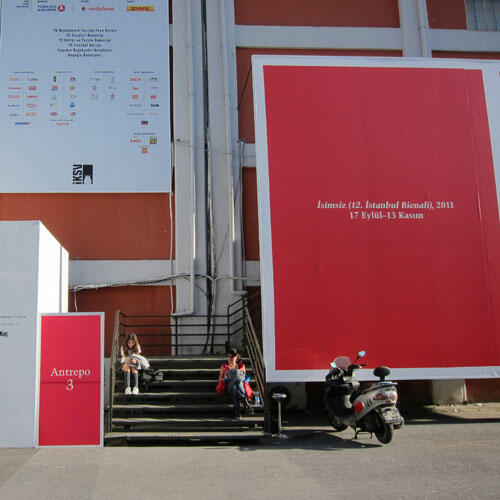
The exhibition is comprised of five thematic groups, each of them taking as its point of departure a specific work by González Torres. It is a rosary articulated around five group exhibitions with approximately ten solo shows in each section, revolving around each group exhibition and referencing the theme of each group. Thus, each section is articulated on the basis of a particular work by González Torres: Untitled (Abstraction) deals with FGT’s abstract legacy and the idea of restoring meaning to abstraction; Untitled (Ross) focuses on FGT’s homosexual activist aesthetic proposal; Untitled (Passport) addresses border and geography issues; Untitled (History) approaches notions of art and history; and Untitled (Death by Gun) examines the relationship between violence and art. All this develops within an exhibition architecture designed by Ryue Nishizawa, a series of open top cubes, wrapped with an exterior of corrugated steel siding. Each exhibition space becomes a sort of art container, square or rectangular in shape, and in different sizes. The largest spaces, painted in grey, contain the five group exhibitions; the rest, painted in white (or black when there are screenings) house the solo shows. Some of the containers are autonomous; others are interconnected; overall, the architecture of the event gives visitors the chance to create their own itineraries. The exhibition labyrinth appears to be alive; it breathes, it expands and contracts in order to accommodate the different shows. But the spaces are also elegant and generous, and the tour also has a symbolic and almost religious element; the small exhibition spaces gave the impression of being small chapels containing art. The installation of the works within the space is also generous; in many cases they do not saturate the white cube and allow the works room to breathe. Al this is staged inside the Antrepo 3 and 5 complex, two large adjoining warehouses inside the harbor area on the Bosporus, which results in a self-contained exhibition, unlike other biennials that spread over the cities that host them, or that attempt to re-claim urban spaces through art. Here the focus is placed on the exhibition itself. Besides the architecture, other well-achieved aspects include the publication of a website synchronized in real time with the biennial, which features the interviews that form part of the biennial’s pre-catalogue, as well as the publication of the pre-catalogue itself, and the accompanying volume, Remembering Istanbul, the result of the homonymous series of lectures in which curators and artists who had participated in previous biennials were asked to evaluate their experiences.
Untitled (12th Istanbul Biennial) 2011, is an intelligent, precise, impeccable and conceptually elegant exhibition which also bears witness to its curators’ knowledge of the art of curating exhibits. Among the event’s great achievements is a series of solo shows conceived as tributes to women artists born between 1896 and 1943, and including Tina Modotti, Elizabeth Catlett, the Afro-American activist based in Cuernavaca, Mexico; the Romanian Geta Bratescu, the Turkish photographer Yildiz Moran Arun, the Italian photographer Letizia Battaglia, the Peruvian conceptual artist Teresa Bunga, the Indian artist Zarina Hashmi, the Hungarian Dora Maurer, Fusun Onur from Turkey, and Martha Roesler, from the USA. The work of many of them has not yet received the recognition it duly deserves, and their inclusion in this Biennial is a rightful homage. Another great achievement is the South-East dialogue established between artists from the Middle East and from Latin America, regions which do not normally maintain a continuous dialogue despite their many similarities and their subordination to the international artistic-cultural mainstream. This dialogue originates in the intersection between the curators’ (and FGT’s) Latin American geography and the geographic region around Istanbul. Thus, very pertinent dialogues are achieved, as for example the one taking place through the staging in adjoining containers of the work by the Brazilian artist Jonathas de Andrade, Ressaca Tropical, and the Lebanese artist Marwa Arsanios’s All about Acapulco, both questioning the transformations of modernity in the geographical peripheries; or the dialogue established between the works critical of Iran by Alessandro Balteo Yazbek and Media Farzin, and the work by Nazgol Ansarinia in the section revolving around Untitled (Abstraction), but also with the piece by Nasrin Tabatabai and Babak Afrassabi in the History section, or in the group show Untitled (Abstraction), where Ligia Clark’s bugs hold a dialogue with Dora Maurer’s photographs or with Charlotte Posenenske’s sculptures in double wall cardboard. The participatory aspects in Clark’s work anticipate the inclusion of the spectators which would be later found in the work of González Torres, through the possibility of carrying a poster away, eating a candy, or going through a curtain. In the same way, many of the resonances and formal relationships between different moments of the exhibition are an achievement; exceptional, for example, are the geometric visual relationships achieved between Falha, Renata Lucas’s mobile wooden floor, and Dora Maurer’s work, but also with Juan Capistran’s geometric abstract painting of a political nature, as well as between Lucas’s work and that of Gabriel Sierra in the adjoining room. Yet sometimes these relationships do not work; they detract from the work or simplify the artistic discourse, reducing it to mere interplays of visual relationships. This occurs in the case of Untitled (Abstraction), where a documentary photograph of Ligia Pape’s Divisor is placed beside a photograph by Annete Kelm of the back of a target, which trivializes Pape’s work; or in the case of Untitled (History), where the exhibition of the Argentine artist Adrián Villar Rojas’s illustrated books beside the publication containing declassified CIA information on South America, by the Chilean artist Voluspa Jarpa, neutralizes the meaning of Jarpa’s work.
Particularly noteworthy among the presentations of the numerous Latin American artists in the exhibition are the solo shows related to Untitled (Abstraction): the op sarape deconstructed by Adrián Esparza and the already mentioned works by Renata Lucas, Gabriel Sierra and Balteo Yazbeck together with Farzin; in the section revolving around Untitled (Passport), the work of Rosángela Renno and Adriana Bustos; around Untitled (Ross),the work of Teresa Burga and Leonilson; around Untitled (Death by Gun), Camilo Yáñez and Edgardo Aragón’s videos, as well as Abraham Cruzvillegas’s revolutionary propaganda, and around Untitled (History), the already mentioned work by Jonathas de Andrade, as well as Tina Modotti’s photographs, the prints by the Cuernavaca-based, Afro-American activist Elizabeth Catlett, and the brilliant work of Milena Bonillas, a video that portrays ants and insects crawling across Marx’s grave, and a paper sculpture of the mentioned grave. Several Latin American artists also participate in the group shows. The problem in this case, as in the case of artists from other regions, is that when the public is not well acquainted with the artist’s work, these turn out to be small samples at the service of the group show, and sometimes, as in the case of Jazmín López in Death by Gun, or Adrián Villar in History, the works are not representative of these artists’ best-known production, so that the visitor finds it difficult to have a clear notion of their work. In other cases, as for example in that of Runo Lagomarsino, Magdalena Jitrik, Wilfredo Prieto or Juan Capistran in Abstraction, Julieta Aranda in History or Johanna Calle in Abstraction and History, among others, these artists deserved to have had an individual space for the public to be able to better understand their work.
Among the group shows, Untitled (Death by Gun) seems to be the weakest and Untitled (Abstraction) and Untitled (Ross), the best-achieved ones. In Death by Gun, the selection criterion appears to be that of exhibiting works based on the unifying theme of gunfire. Exhibited together, for example, are Eddie Adams’s photographs of people killed in Viet Nam, the documentation of the action in which artist Chris Burden gets shot, and the cover of Time magazine of 1968 featuring a gun by Roy Lichtenstein. Here, the absence of Teresa Margolles’s bullet-ridden doors and American artist Nate Lowman’s bullet holes is felt.
On the other hand, Untitled (Ross), a tribute to González Torres’s partner, who died of AIDS five years before the artist, is Pedrosa’s curatorial coming out of the closet, and it is an elegant show, which may sometimes appear rather shy, although it is important to remember that the exhibition takes place in Turkey, a country which, although liberal by comparison with other Muslim countries, is still conservative with regard to the visibility and rights of sexual minorities. Outstanding in Untitled (Ross) are the works of Kutlug Ataman, in which the artist shows identification papers where he has had to feminize his sexuality in order to avoid being drafted, as well as Jonathas de Andrade’s photographs documenting, as in a manual, two men transforming two single beds into a double bed; Henrik Olesen’s flier on homosexual visibility, or Ira Sachs’s video, Last Address, which shows the façades of the places where different artists lived just before they died of AIDS. There are other works in other sections which also effectively portray loss derived from the passage of time: fruits decaying in a fruit bowl, by Gabriel Sierra, and Wilfredo Prieto’s also ripening and ageing cube-shaped watermelon, both in Untitled (Abstraction), as well as the Turkish artist Cevdet Erek’s history dateline piece in Untitled (History). Among the works structured around Untitled (Ross), three which are indeed brilliant deserve special notice. The exhibition Aids Material, by Group Material, a political art collective of which González Torres was a member, which was installed as an AIDS Time Line on the wall in 1989; now the time line remains on the wall, and the documentary material is in the center of the room inside showcases. Akram Zaatari’s film, Tomorrow Everything Will Be All Right, depicts the sense of loss and absence of two lovers who meet again after many years. And lastly, the exhibition space devoted to Leonilson, who was born on the same year as González Torres and died of AIDS in 1993, and who, through Pedrosa’s close contact with his work, is perhaps the promoter of the relationship between the Biennial and González Torres’s work. Leonilson´s fabric and embroidered works are reminiscent of religious mantles and holy shrouds containing the memory of the martyr. Here, unlike in other galleries, there is no empty space; the work covers all the walls; there is no more room to exhibit; the work ends with Leonilson’s death.
Even though this is an impeccable biennial, whether the curators achieve the goal they themselves have set − to establish a relationship with the poetic/political essence of González Torres’s work − or if the González Torres pretext was necessary, is not always clear. The relationship between the works exhibited at the biennial and the spirit of González Torres’s oeuvre is not always evident, although there are some which actually do resort to González Torres’s formal language (for example, a Turkish coin placed beside a euro by Ahmet Ogut, in the manner of the clocks in Perfect Lovers, or Meric Algun Ringborg’s blue room and Turkish-Swedish dictionary, copies of which can be taken by the viewers; Simryn Gill’s extraordinary photographs, Claire Fontaine’s printed leaflet on the equivocal killing of the Brazilian national Jean Charles de Menezes by the British police, which visitors can also take with them; the Argentine artist Nicolás Bacal’s clock, a half-clock inspired by the one featured in Perfect Lovers, now without the hands; or Chris Martin’s massive pile of shells in Death by Gun (although in this case visitors cannot eat or take the shells). Likewise, the art-politics relationship, or what the curators understand as politics, is not altogether clear (to anyone interested in the subject, I suggest they read Hoffmann’s critique of the 29th Sao Paulo Biennial in Frieze magazine, issue 136, January/February 2011). In its political approach, the Biennial avoids addressing issues which might be sensitive in the case of Istanbul. For example, in the works structured around Untitled (Ross) there is no reference to Ahmet Yildiz, the young Turkish man murdered in 2008 by his own family in an honor killing for being a homosexual, in the same way that the section structured around Untitled (History) and Untitled (Passport) address issues concerning Palestine or Iran, but except for a neon piece by Claire Fontaine, there are minimal references to the struggles of the Kurdish minorities in Turkey.
In this respect, the biennial curated by Pedrosa and Hoffman is heir to the discussions on the relationship between art and politics originating in Documenta X, curated by Catherine David in 1997 (and the influence this latter event has had on international biennials as of that date, having the art/politics issue become a leit-motif, with results which have been excessively figurative/documentary); and on the other hand, the highly criticized proposal of recovery of aesthetics and migration of the form posited by Documenta XII, curated by Roger Buergel and Ruth Noack in 2007 (which in turn was a reaction to the legacy of Catherine David’s Documenta and the subsequent Documenta XI). Thus, Untitled (12th Istanbul Biennial), 2011, constitutes an attempt to conciliate these two positions, and in a similar way to what Félix González Torres did in his own historical and aesthetic moment, restore to aesthetic form its political capacity. By assuming his sexual persona and making it public, Félix González Torres, an artist of Cuban origin, had an effect on the aesthetic and the political spheres, and he infiltrated into the American mainstream art world a virus disguised as normal. It is perhaps this latter strategy that has been applied by the exhibition curators, utilizing González Torres like a Trojan Horse, to insert in the biennial a series of less visible discourses and artists, and in this way force the attending public to question each person’s reality, so as to − in the words of Hoffmann and Pedrosa, and in the manner of González Torres − “use art as a catalyst for change” and “make this world a better place.” Somewhere better than this place.
-
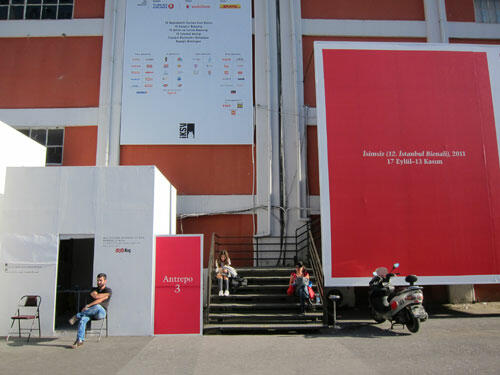 Photo and courtesy/ Foto y Cortesía: Pablo León de la Barra
Photo and courtesy/ Foto y Cortesía: Pablo León de la Barra -
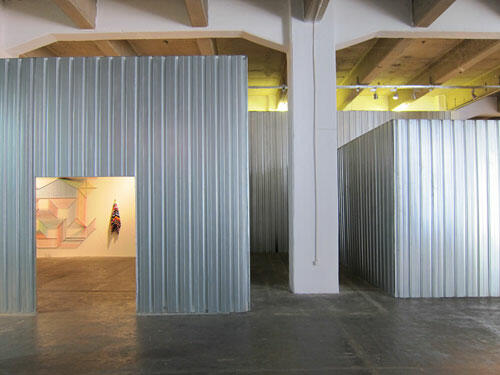 View of the exhibition architecture designed by Ryue Nishizawa/ Vista de la arquitectura de la exposición diseñada por Ryue Nishizawa
View of the exhibition architecture designed by Ryue Nishizawa/ Vista de la arquitectura de la exposición diseñada por Ryue Nishizawa
Photo and courtesy/Foto y Cortesía: Pablo León de la Barra -
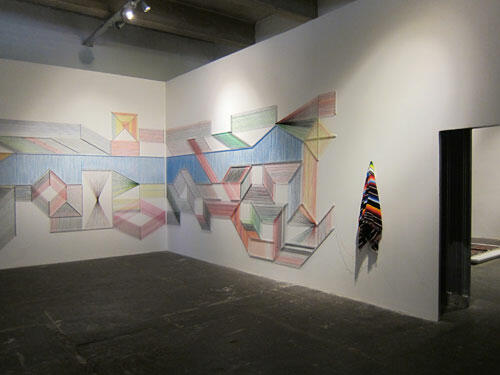 Photo and courtesy/Foto y Cortesía: Pablo León de la Barra
Photo and courtesy/Foto y Cortesía: Pablo León de la Barra -
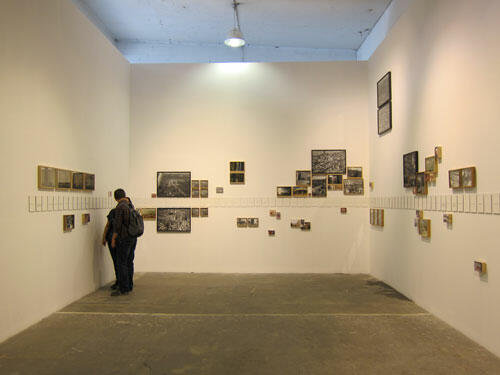 Photo and courtesy/ Foto y Cortesía: Pablo León de la Barra
Photo and courtesy/ Foto y Cortesía: Pablo León de la Barra -
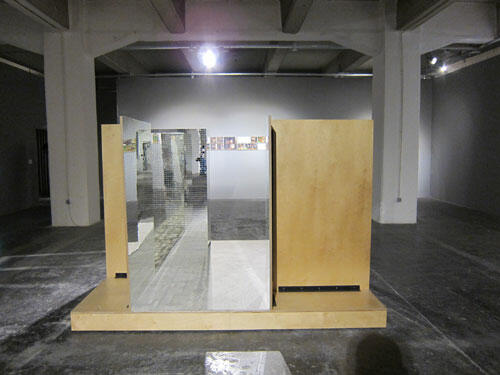 Photo and courtesy/Foto y Cortesía: Pablo León de la Barra
Photo and courtesy/Foto y Cortesía: Pablo León de la Barra -
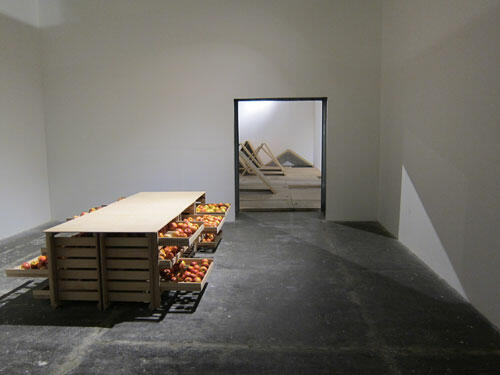 Gabriel Sierra viendo hacia Renata Lucas Photo and courtesy/Foto y Cortesía: Pablo León de la Barra
Gabriel Sierra viendo hacia Renata Lucas Photo and courtesy/Foto y Cortesía: Pablo León de la Barra -
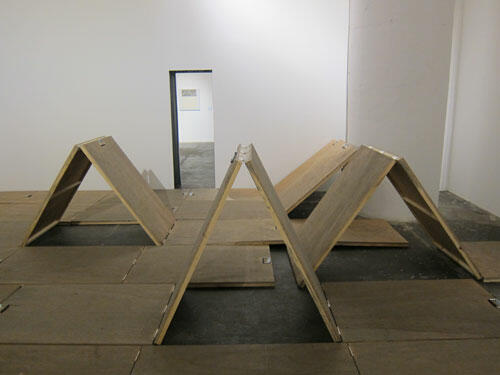 Renata Lucas viendo hacia Dora Maurer. Photo and courtesy/Foto y Cortesía: Pablo León de la Barra
Renata Lucas viendo hacia Dora Maurer. Photo and courtesy/Foto y Cortesía: Pablo León de la Barra -
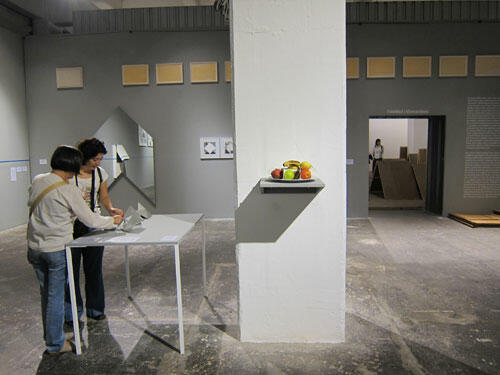 Photo and courtesy/Foto y Cortesía: Pablo León de la Barra
Photo and courtesy/Foto y Cortesía: Pablo León de la Barra -
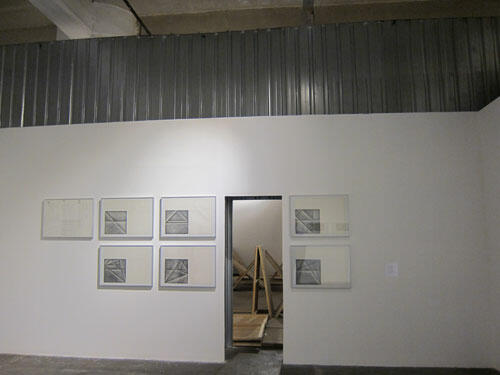 Dora Maurer viendo hacia Renata Lucas. Photo and courtesy/Foto y Cortesía: Pablo León de la Barra
Dora Maurer viendo hacia Renata Lucas. Photo and courtesy/Foto y Cortesía: Pablo León de la Barra




